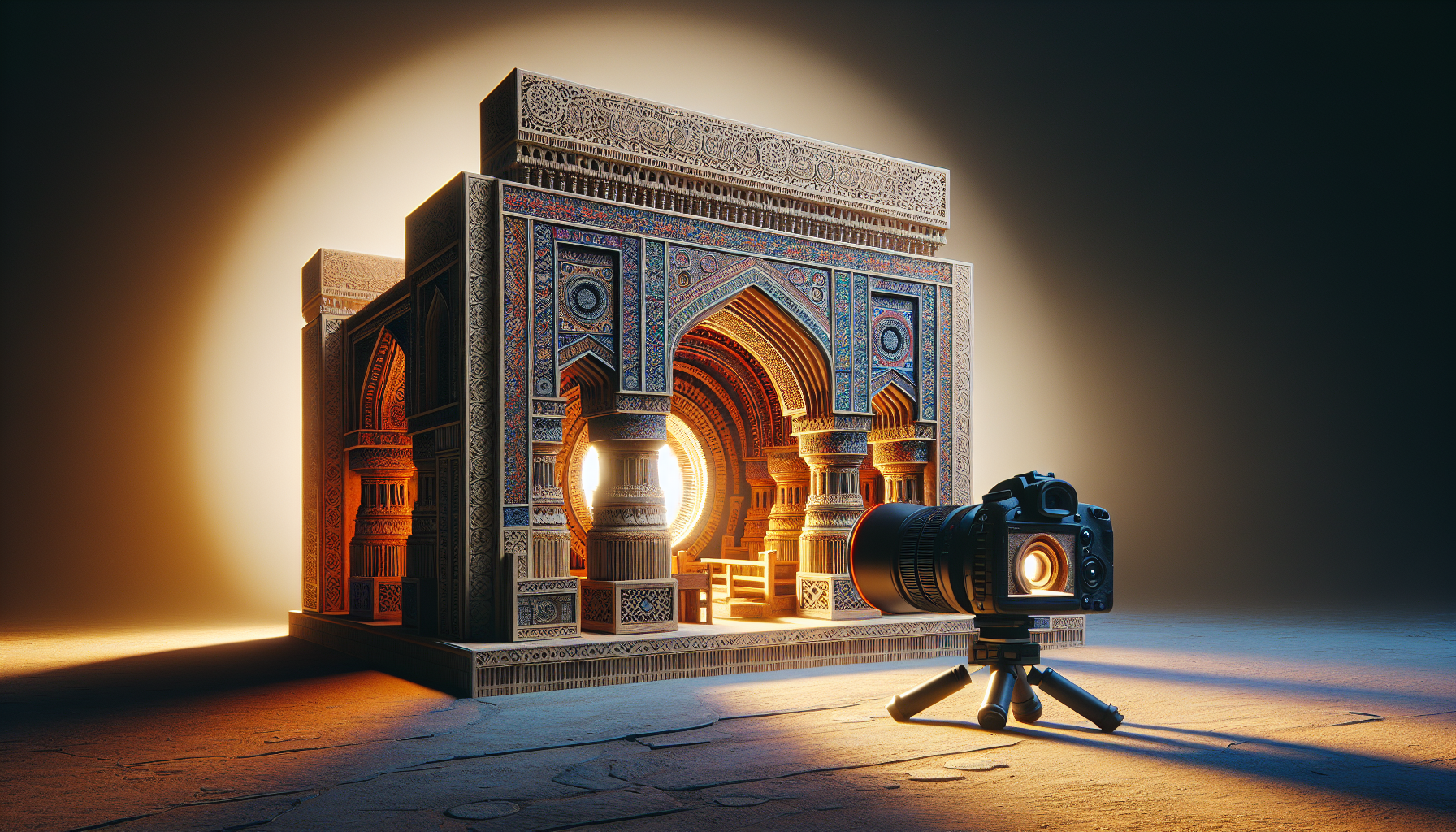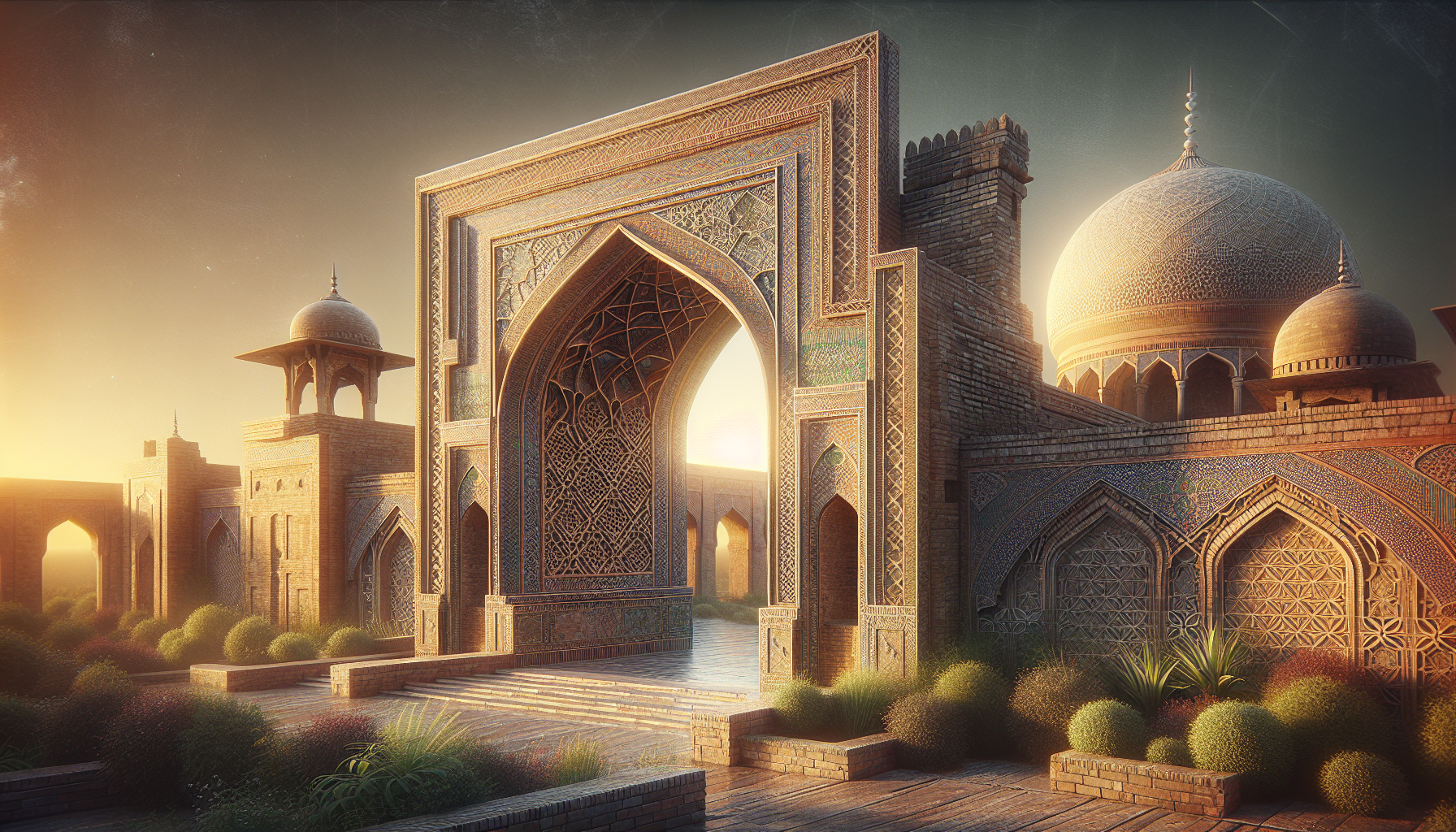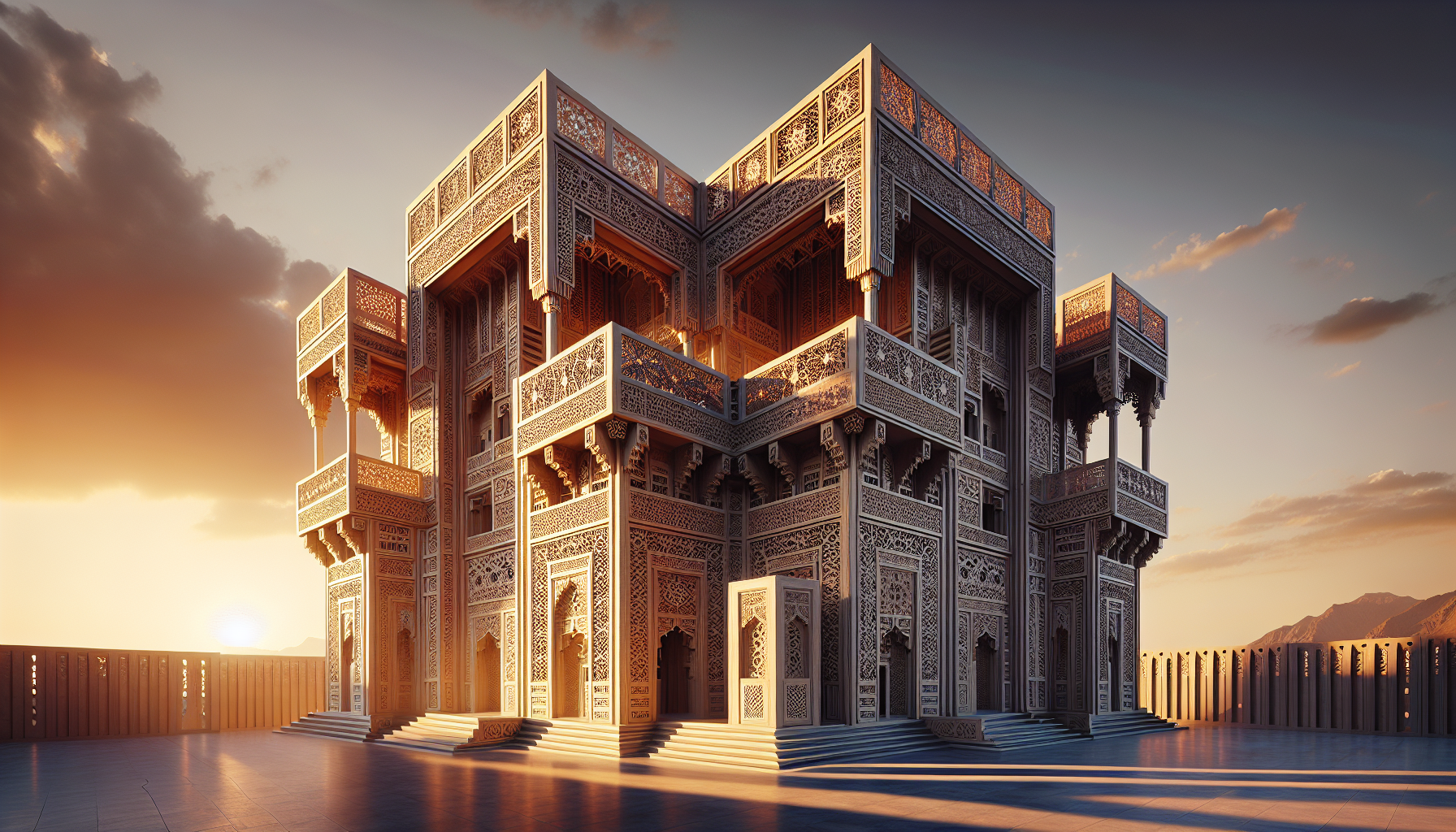To truly understand how to capture the essence of Pakistani architecture with techniques for stunning shots, one must delve into its cultural significance. Each building tells a story woven into the fabric of Pakistan’s diverse heritage. From the intricate designs of the Mughal era seen in the iconic Badshahi Mosque to the modern marvels of Lahore University of Management Sciences, the architectural tapestry is both vast and varied. I recall standing in awe at the Lahore Fort, the afternoon sun casting dramatic shadows, revealing hidden details in every arch and motif. As you explore these spaces, allow yourself to be immersed in the stories they tell, using light and angles to bring their history to life. Embrace the richness and diversity that Pakistani architecture offers, and let it guide you in creating images that speak volumes.
How to Capture the Essence of Pakistani Architecture: Choosing the Right Equipment
Choosing the right equipment is crucial for capturing the essence of Pakistani architecture. Our country boasts a rich tapestry of architectural styles, from the intricate tile work of the Wazir Khan Mosque to the modern flair of the Pakistan Monument. With the right tools, you can showcase these marvels in all their glory.
Camera and Lens Selection
A DSLR or mirrorless camera is ideal for architectural photography. It provides the flexibility to adjust settings like ISO, shutter speed, and aperture. For lenses, a wide-angle lens is essential. It allows you to capture the grandeur of structures like the Faisal Mosque. If you want to focus on details, a prime lens with a fixed focal length can be beneficial.
Accessories for Precision
- Tripod: A sturdy tripod is a must. It helps stabilize your camera for long exposures, especially useful during low light conditions at dawn or dusk.
- Polarizing Filter: This filter reduces glare and enhances colors, making the intricate patterns of the Badshahi Mosque even more vibrant.
- Drone: For aerial shots, a drone can provide unique perspectives of sprawling complexes like the Lahore Fort.
I remember my first visit to Mohenjo-daro; the lighting was perfect, but my handheld shots were shaky. Since then, I never forget my tripod. Investing in the right gear truly transforms your ability to capture stunning shots of Pakistan’s architectural wonders. Whether you’re an amateur or a pro, these tools will elevate your photography game.
How to Capture the Essence of Pakistani Architecture: The Role of Lighting in Photography

Photography is an art of light, and when it comes to capturing the stunning beauty of Pakistani architecture, understanding the role of lighting is crucial. The interplay of light and shadows can highlight intricate details and evoke emotions that resonate with the cultural significance of each structure.
Understanding Natural Light
Natural light transforms the essence of architectural photography. The golden hours at dawn and dusk offer a soft, warm glow that elevates the rich textures of historical sites like the Badshahi Mosque. During midday, the harsh sunlight can accentuate the bold lines of modern architectural wonders such as Pakistan Monument. Experimenting with different times of the day can yield breathtaking results.
Utilizing Artificial Lighting
When natural light is scarce, artificial lighting becomes your ally. Using external flashes or portable LED lights can dramatically change your composition. This technique is particularly useful when photographing indoor spaces, such as the intricately decorated halls of Lahore Fort. Be mindful of light temperature to maintain the authenticity of your images.
Practical Tips for Capturing Light
- Reflectors can bounce natural light onto darker areas, bringing out hidden details.
- Using a tripod allows for longer exposure times, essential for capturing low-light scenes without blur.
- Experiment with different angles to see how light interacts with the structure.
According to a report by National Geographic, understanding and manipulating light is one of the most critical aspects of photography. It has the power to transform a mundane image into a masterpiece. As you explore the architectural wonders of Pakistan, let the light guide your creativity, unlocking new perspectives and capturing the essence of each historical gem.
How to Capture the Essence of Pakistani Architecture: Framing and Composition Techniques
When you think about capturing the essence of Pakistani architecture, framing and composition are crucial. It’s not just about pointing your camera at a building; it’s about telling a story through your lens. I remember my first visit to the Badshahi Mosque in Lahore, a moment that truly captured my interest in architectural photography. The key was finding the right angle that encompassed both the grandeur and intricate details of the structure.
Emphasize Unique Angles
One way to create stunning photographs is to focus on unique angles. Instead of the usual frontal shots, try shooting from a lower or higher vantage point. This technique helps capture the scale and majesty of structures like the Faisal Mosque. It’s amazing how a shift in perspective can transform an ordinary shot into a captivating one.
Use Leading Lines and Symmetry
Leading lines guide the viewer’s eye through the photograph. Look for natural lines in the architecture that direct attention to the focal point. Symmetry, common in Mughal architecture, also makes for a visually pleasing composition. Both elements can be explored further in our comprehensive guide to architectural photography in Pakistan.
Consider the Foreground
Including elements in the foreground can add depth to your images. Whether it’s a lush garden or a bustling street scene, these elements provide context and enhance the story your photo tells. For instance, capturing the vibrant hustle surrounding the Lahore Fort can highlight the contrast between the historical and the modern.
Remember, each shot is an opportunity to highlight the beauty and complexity of Pakistani architecture. With thoughtful framing and composition, your photos can truly capture the essence of these magnificent structures.
Exploring Iconic Pakistani Structures for Stunning Shots
Pakistan’s architectural landscape is a treasure trove for photographers looking to capture the essence of its rich history and cultural diversity. From the grandiose structures of the Mughal era to modern architectural wonders, there’s something for every photography enthusiast.
Start with Historical Marvels
The Lahore Fort and the Badshahi Mosque are perfect for capturing the grandeur of Mughal architecture. These sites offer an abundance of intricate details and stunning symmetry. While photographing the Lahore Fort, try visiting during the golden hour when the sunlight bathes the red sandstone in a warm glow. A close friend once shared how her early morning shots of the Badshahi Mosque turned out to be her most cherished photographs, thanks to the serene morning light.
Modern Architectural Gems
Don’t miss exploring the Faisal Mosque in Islamabad, an exquisite blend of Islamic and modern styles. Its unique architecture offers photographers a chance to play with angles. Experiment with wide shots to capture its grandeur against the Margalla Hills. During a recent visit, I found that an evening shoot allowed me to capture the mosque in a soft, ambient light that highlighted its modern design.
Tips for Capturing Stunning Shots
- Use natural light to your advantage, especially during sunrise or sunset.
- Consider using a tripod for stability, especially when capturing intricate details.
- Experiment with different angles to showcase the unique characteristics of each structure.
Whether you are an amateur photographer or a seasoned pro, Pakistan’s architectural wonders offer endless opportunities to hone your skills and capture breathtaking images.
Editing Techniques to Enhance the Essence of Pakistani Architecture in Photos

Editing your photos can truly bring out the historical richness of Pakistani architecture. From the majestic Badshahi Mosque to the intricate patterns of the Shah Jahan Mosque, enhancing your images is key to showcasing these architectural wonders. Here are some tried-and-true editing techniques that can make your photos pop.
Adjusting Light and Shadows
Capturing the subtleties of light is crucial. Use editing tools like Adobe Lightroom to adjust exposure and contrast. This will help highlight the ornate details of the architecture. I once took a photo of the Lahore Fort at dusk and managed to bring out its golden hues by tweaking the shadows and highlights. The transformation was stunning!
Enhancing Colors
Colors play a significant role in making your photos vibrant. Use the saturation and vibrance sliders to make the reds and blues more pronounced. When I photographed the Hiran Minar, enhancing the colors helped bring out the lush greens of the surrounding gardens, creating a more immersive experience.
Sharpening Details
Pakistani architecture is renowned for its intricate details. Use the sharpening tool to ensure these elements stand out. Be cautious, though; over-sharpening can lead to a noisy image. A subtle enhancement will highlight the craftsmanship without losing the photo’s natural feel.
Using Filters for Mood
Consider using filters to convey a specific mood or era. Instagram offers various filters that can add a nostalgic touch to your images. I once used a vintage filter on a photograph of the Mohatta Palace, and it beautifully captured the essence of its colonial history.
By applying these editing techniques, you’ll be able to capture the true essence of Pakistani architecture, celebrating its beauty and history in every shot.
Conclusion
Mastering the art of capturing the essence of Pakistani architecture involves more than just technical skills. It requires an appreciation for the cultural stories that these structures tell. Whether you’re photographing the intricate woodwork of Shalimar Gardens in Lahore or the grandiose design of Mohatta Palace in Karachi, each frame offers a unique narrative.
Key Takeaways
To truly capture the spirit of these architectural wonders, consider the following strategies:
- Lighting: Early morning or late afternoon light can highlight architectural details beautifully.
- Angles: Experiment with different perspectives to emphasize the scale and intricacy of structures.
- Storytelling: Focus on elements that tell a story, such as carvings or inscriptions.
When I first started photographing the Badshahi Mosque, I was struck by its sheer size and intricate details. I found that using a wide-angle lens allowed me to capture the mosque’s grandeur, while a close-up shot highlighted its exquisite tile work. Such techniques can make a significant difference in your photography.
As you engage with these techniques, remember that each shot is an opportunity to share the rich tapestry of Pakistan’s architectural heritage. The use of natural light can elevate your work, casting shadows that add depth and dimension. Similarly, exploring various angles can provide new perspectives that might otherwise go unnoticed.
Ultimately, the goal is to create images that evoke a sense of place and history. By combining technical skills with a passion for storytelling, you’ll be able to capture the essence of Pakistani architecture in ways that resonate with viewers both locally and globally.
Continue Exploring
Unlock the future of architectural photography with cutting-edge techniques in 'Post-Processing Architectural Photos in 2025: Enhance Efficiency, Precision & Creativity'. Dive deeper into the art of transforming your images!
Frequently Asked Questions
What are the best techniques for photographing Pakistani architectural landmarks?
To effectively capture Pakistani architectural landmarks, it is essential to focus on using natural light, experimenting with different angles, and incorporating the surrounding environment. Understanding the historical and cultural context of the architecture can also enhance the storytelling aspect of your photographs.
How can lighting affect the photography of traditional Pakistani buildings?
Lighting plays a critical role in architectural photography by highlighting textures, creating shadows, and setting the mood. For Pakistani architecture, which often features intricate details and vibrant colors, shooting during golden hours—early morning or late afternoon—can enhance these elements. Experiment with both natural and artificial lighting to achieve the desired effect.
What angles work best for capturing the essence of Mughal architecture in Pakistan?
To capture the grandeur of Mughal architecture in Pakistan, use low angles to emphasize the scale and symmetry of structures. Wide-angle shots can encompass the elaborate gardens and courtyards, while close-ups of decorative elements like minarets or frescoes can highlight the intricate craftsmanship. Experimenting with various perspectives can lead to more dynamic and engaging photographs.


Leave a Reply